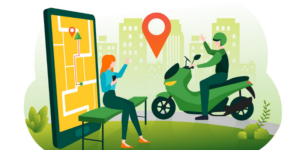The COVID-19 pandemic has transformed the world, and also presented organisations with a great opportunity to innovate and find new growth potential.
Catastrophic circumstances such as the current one push humans to the brink, propelling them to stretch their imagination. When environmental dynamics change, it creates newer opportunities hitherto hidden from our vision. From finding new uses for products to designing new business models and creating absolutely new products, history is rife with interesting examples of pathbreaking innovations.
General Electric, Hewlett Packard, MTV, CNN, FedEx, AirAsia, Burger King, Google, eBay, Airbnb, and the list goes on – if there’s one thing that’s common among these companies, it is that each one of these innovative companies were started in the middle of a recession! The history of humanity has been a history of ingenuity and innovation in challenging times of uncertainty.
To thrive in this VUCA world, organisations and institutions need to be able to innovate with agility, not only now but even after this crisis is over. In this context, organisations that are digitally savvy and mature have an edge over others.
Innovation is the key
Interestingly, uncertainty as a phenomenon has been increasing in the past 30 years. In many research studies in the past years, corporate executives across the world have indicated innovation as a key focus area during uncertain times.
In the first few weeks after the World Health Organization declared a global pandemic, there is research that indicates companies across different industries innovated rapidly. This trend indicates the natural human tendency to react with agility when we are confronted with a challenging uncertainty.
New initiatives and collaborations
The pandemic also shifted the focus of corporate innovation. As it began to unfold dramatically, the world witnessed many exciting instances of fast innovation.
For example, many retailers converted their brick-and-mortar sites to pickup convenience service stores, movie studios started looking at streaming services bypassing conventional theaters, hotel chains offered workspaces on daily rates, and passenger airlines shifted to cargo-only flights when passenger demand diminished.
New kinds of collaborations also evolved, where a pharmacy chain tied up with the logistics provider and started delivering critical medicines to elderly residents in a retirement community, through drone services. Most of these interesting initiatives actually occurred in just a few weeks after the COVID-19 crisis.
Innovate with agility
At times of rising uncertainties such as these, the ability to innovate with agility becomes extremely important. A critical dimension would be to realign existing knowledge, resources, and technology to the emerging needs.
For example, during this phase of rapid innovation, pharma companies realigned and repositioned existing drugs for treatment of COVID-19. Alcohol companies started venturing into manufacturing hand sanitisers and similar products, various other industrial organisations shifted production capacity to manufacture pandemic relevant products such as face shields, personal protective equipment, and face masks.
In the near future, human and technology innovation will result in more intelligent solutions and more fluid businesses. This could include intelligent health, driven by data analytics and tracked by the Internet of Everything; distributed work that will encompass agile, remote, and freelance options; retail platforms that are automated, low-touch and cashless; personal mobility that will be individual, electric, and local; and lifelong education with flexible and hybrid options.
This catastrophic historical event has certainly validated the power of human ingenuity and how innovation can thrive even in uncertain times. To ensure business continuity, it would be worthwhile for organisations to understand this and explore ways to realign their focus and achieve rapid growth – now and in the future.
(Disclaimer: The views and opinions expressed in this article are those of the author and do not necessarily reflect the views of YourStory.)










